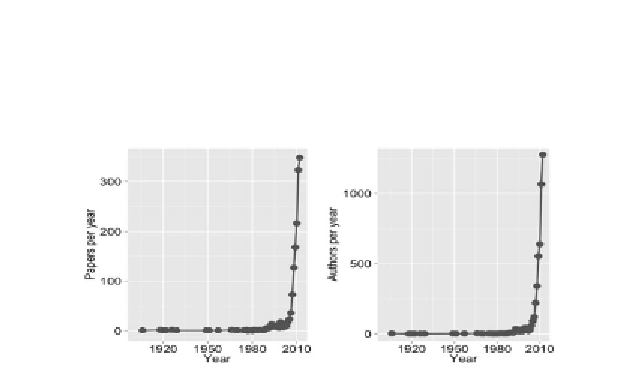Geoscience Reference
In-Depth Information
Modern research on the acidification of oceans is, therefore, very
young. A bibliographical analysis of the 1,514 articles published
between 1906 and 2012 highlights the exponential change of this
research area over the last few years (Figure 5.2).
Figure 5.2.
Ocean acidification: number of publications and
authors per year. See [GAT 11a] for additional information
on the bibliographic database used
The vast majority (88%) of articles were published after 2003. The
number of articles published per year has increased from 22 articles in
2004 to 353 articles in 2012, thus an increase by a factor of 16.
The trend of the type of study (63% of the articles published until
2010 focused on the biological response to acidification [GAT 11a])
and on the organism and the process investigated show that the
research effort has mostly been restricted to a few taxonomical groups
(phytoplankton, followed by corals, molluscs and macro-algae) and
processes (primary production, growth and calcification). The most
studied regions are the Atlantic and the North Pacific, and the majority
of studies have been carried out in the laboratory (67% vs. 33% of
field studies). The research effort is, therefore, very imbalanced, with
few studies dedicated to the polar regions, where the effects of ocean
acidification are projected to occur sooner than elsewhere, and few
studies on communities and species of economically important
taxonomic groups such as fish and crustaceans. However, some of
these shortcomings have attracted growing attention in the last few
years. Finally, Europe has been the main contributor of articles on
ocean acidification during the period 1906-2012 (41%, based on the
affiliation of the first author), followed by the United States (27%).

